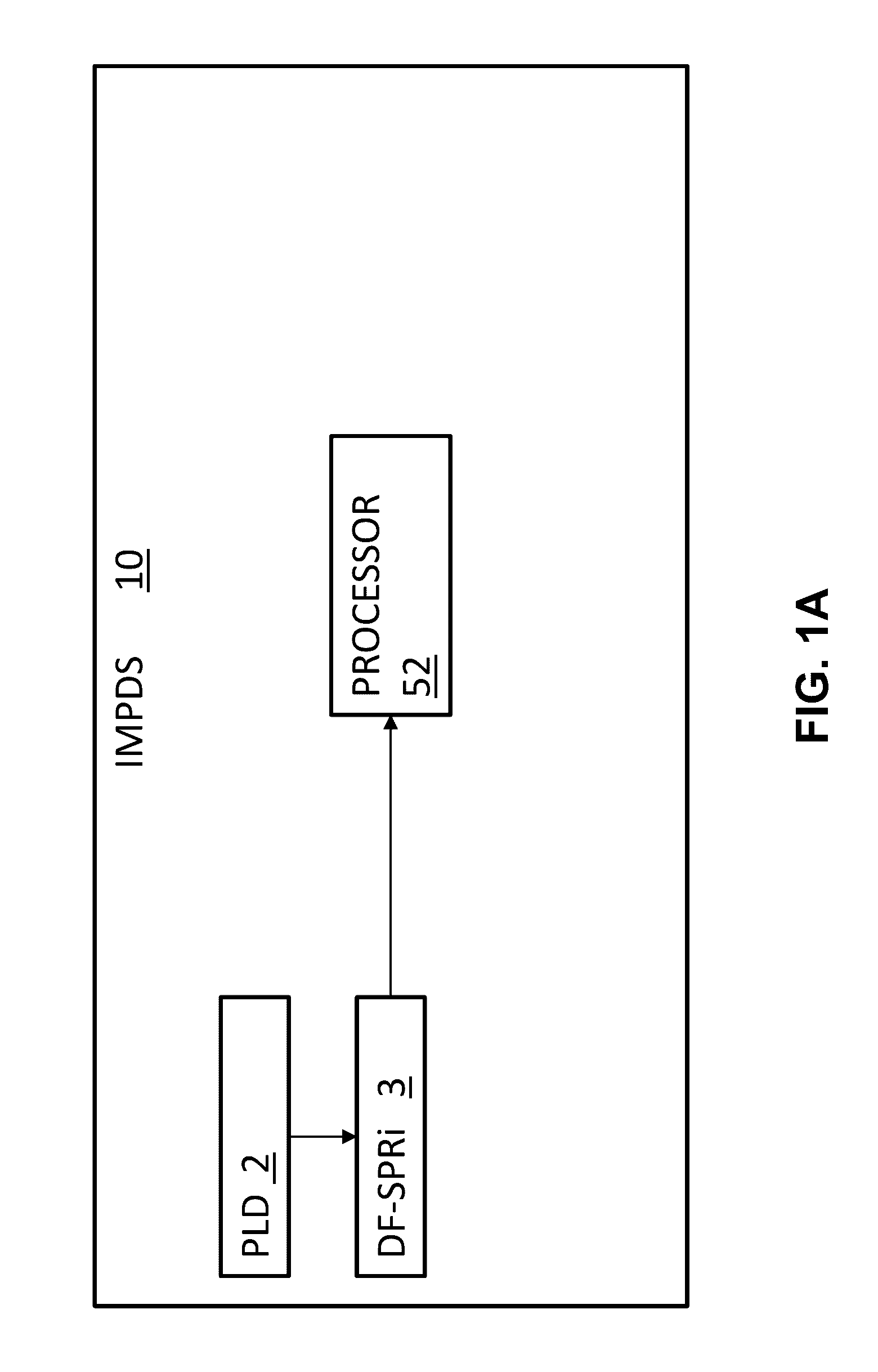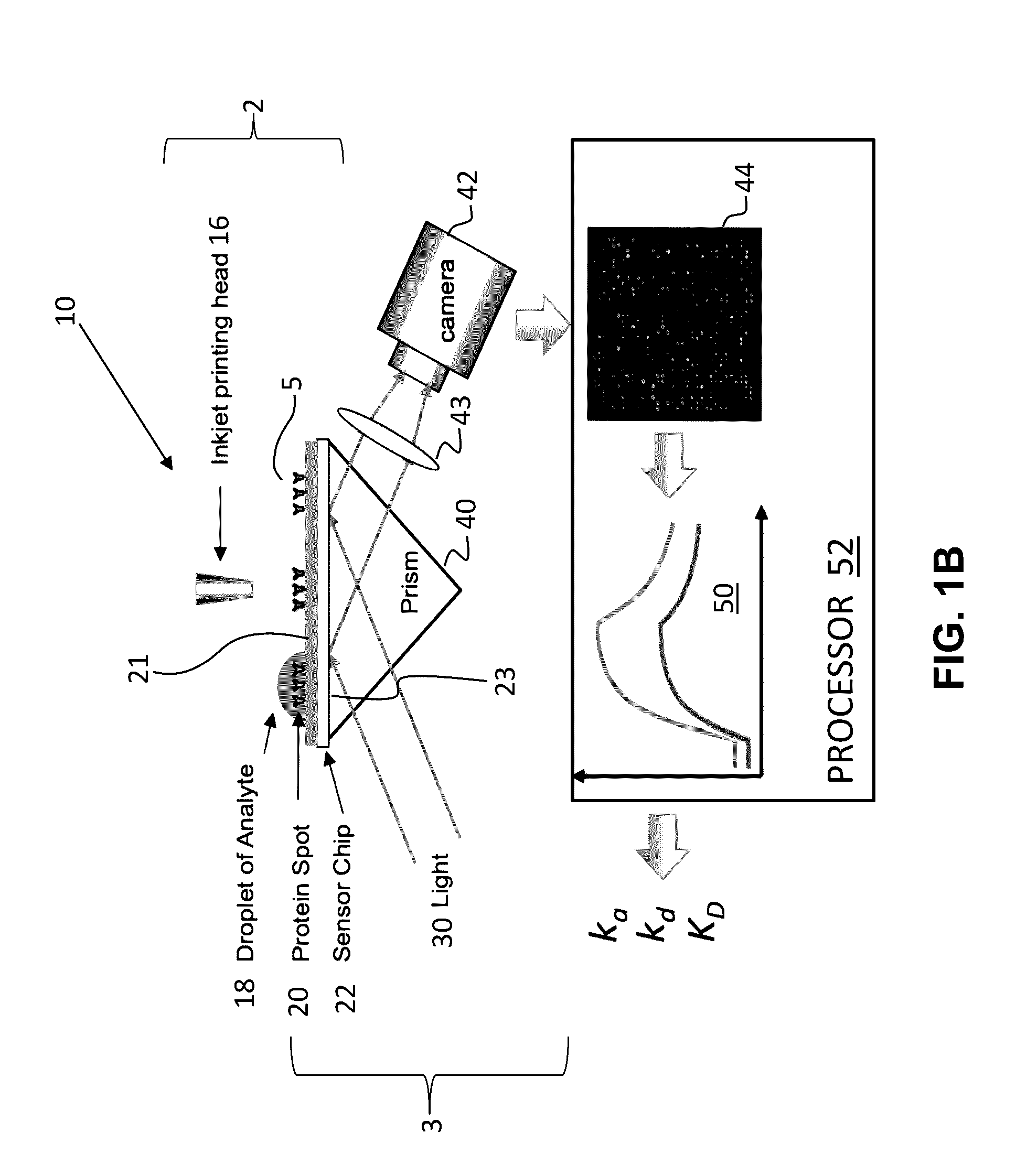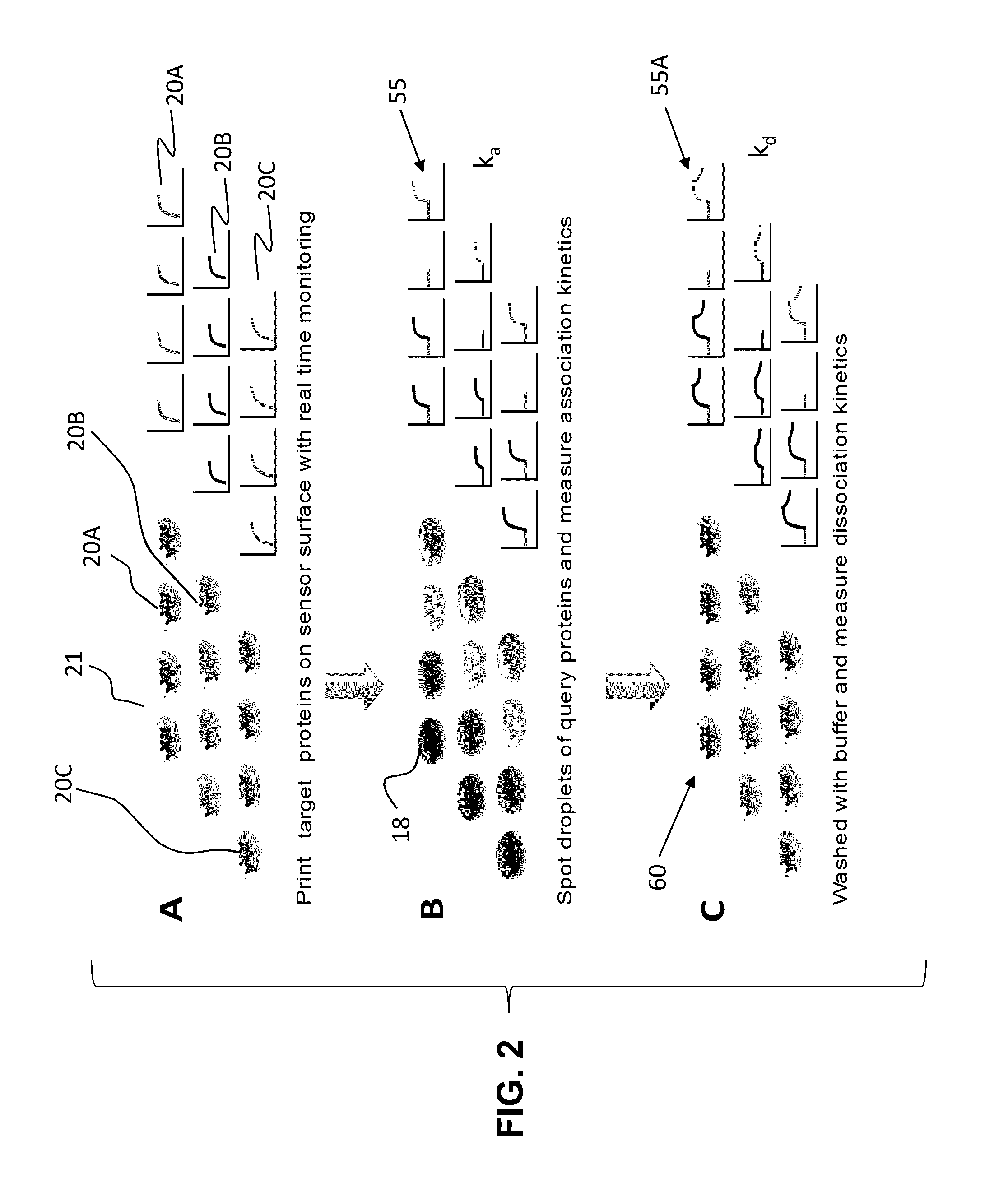Integrated microarray printing and detection system for molecular binding analysis
a detection system and microarray technology, applied in the field of microarray technology, can solve the problems of inconclusive data, limited application and analytical power of microarrays, and unnecessary tests
- Summary
- Abstract
- Description
- Claims
- Application Information
AI Technical Summary
Benefits of technology
Problems solved by technology
Method used
Image
Examples
example embodiments
[0047]In its most salient aspects, a novel method to measure protein interaction kinetics in a single droplet that reduces the sample volume requirement by 3-4 orders of magnitudes than conventional flow-based kinetic measurement is disclosed herein. A droplet with sub microliter or less volume in a humidity-controlled environmental chamber is replacing the microfluidic channels as the reactor for the protein interaction. The binding process in the droplet is measured by a SPRi setup. All kinetics constants of IgG / Anti-IgG interaction are obtained from the association will of the interaction at multiple concentrations of the analyte. The results are validated by conventional flowing-based measurements using the same setup. COMSOL simulation reveals that the smaller binding signal on the edge of the droplet is caused by mass transport limitation, and this limitation vanishes when the droplet volume approaching nanoliter scale. This droplet-based method also opens the door for high-th...
PUM
| Property | Measurement | Unit |
|---|---|---|
| radius | aaaaa | aaaaa |
| radius | aaaaa | aaaaa |
| radius | aaaaa | aaaaa |
Abstract
Description
Claims
Application Information
 Login to View More
Login to View More - R&D
- Intellectual Property
- Life Sciences
- Materials
- Tech Scout
- Unparalleled Data Quality
- Higher Quality Content
- 60% Fewer Hallucinations
Browse by: Latest US Patents, China's latest patents, Technical Efficacy Thesaurus, Application Domain, Technology Topic, Popular Technical Reports.
© 2025 PatSnap. All rights reserved.Legal|Privacy policy|Modern Slavery Act Transparency Statement|Sitemap|About US| Contact US: help@patsnap.com



